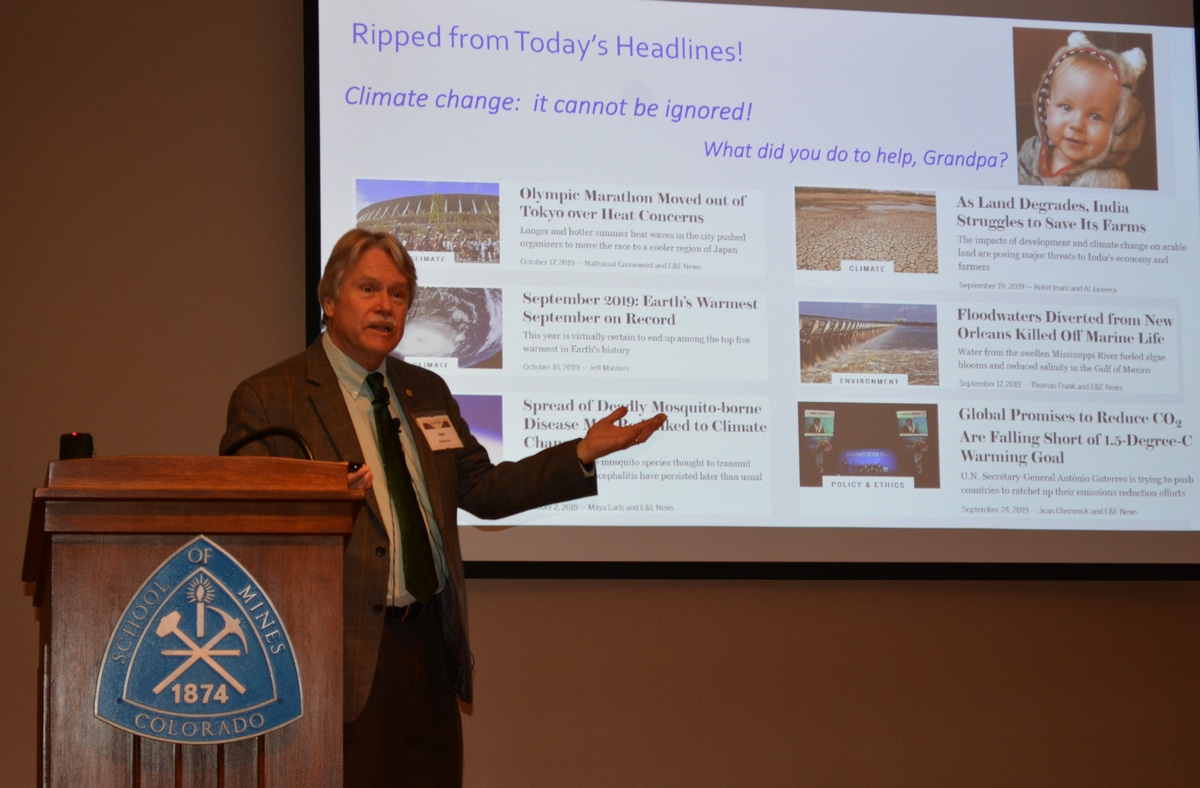With M-STEM 2019 focused on Earth, Energy, and the Environment, Ames Lab scientist, Dr. Iver Anderson’s keynote described how climate change is challenging the scientific community to drive clean energy innovations.
At the Ames Lab, a U.S. Department of Energy research facility operated by Iowa State University, Dr. Anderson leads out in how materials can renew energy. The future of cheaper, cleaner, and more efficient means of creating energy were areas that Dr. Anderson shared in his keynote at M-STEM.
As you will see in the short video clip of his talk, he explains how energy and energy generation is changing in the USA and worldwide. His goal included giving participants new data; statistics and insights into renewable energy and the urgency to do more about it. He starts with looking at global electricity generation distribution, that is, how coal, natural gas, solar, and wind, among other methods are in use today.
In his keynote, he tackles some of the thorny issues around greenhouse gas emissions by energy type and that Lignite (soft and dirty coal) and Coal are the biggest contributors. These greenhouse contributors are the obvious targets of alternative energy sources, such as wind, solar, and water. The cost of power generation is going down and the price of natural gas is so low and so much more efficient, that coal is going down in use in the U.S. and around the world.
He highlights that it is important to remember that although Wind and Solar are coming up, Natural Gas and Coal are base load — add electrical capacity all the time, 24-hours a day, and energy from those kinds of power plants are still needed. Wind and solar are not the base load provider, so there has to be a mix. In addition, the average cost of energy in North America shows how solar has decreased in cost to be very close to wind generated power and natural gas costs.
He closes this video section with who is moving the fastest to convert coal plants to renewable sources and China is the winner there. They have a huge dam as a hydroelectric source and are building large scale wind farms. In Europe, Germany has banned nuclear power and is building offshore power; they are the second biggest producer of wind power behind the United Kingdom. But the one renewable power source that wins every prediction: Solar Photovoltaic (PV).
